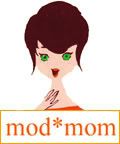 I've been meaning to blog about Redakai for more than a few weeks now. After all, it's only the coolest card game on the planet. It was only my sons' favorite toy out of all the toys I brought home from BlogHer 2011. Even though all I brought home was a measly sample pack of 11 cards, they loved it so much that they actually decided to spend some of their own hard-earned money to go out and buy themselves a Redakai starter pack.
I've been meaning to blog about Redakai for more than a few weeks now. After all, it's only the coolest card game on the planet. It was only my sons' favorite toy out of all the toys I brought home from BlogHer 2011. Even though all I brought home was a measly sample pack of 11 cards, they loved it so much that they actually decided to spend some of their own hard-earned money to go out and buy themselves a Redakai starter pack.What held me back? I'm ashamed to admit it, but the truth is that I didn't know how to play the card game! Me, an adult with an advanced degree in engineering and years of experience testing financial trading software, didn't know how to play a game that my 7-year old sons figured out in fifteen minutes. So I procrastinated on raving about Redakai.
Until last week, when I attended an online info session on the basics on Redakai, hosted by my favorite toy gurus, Jim Silver and Chris Byrne from Time To Play. If Jim and Chris say a toy is hot, it's hot -- Chris is The Toy Guy, after all -- and if anyone can show me how to work a toy, they can. I've finally figured out how to play with Redakai cards, and I'm even more ashamed than ever that I didn't take the time (all of 15 minutes) to learn!
If your son's constant chattering about Redakai is making your head hurt so all you can do is smile and nod, just read my primer below. You'll finally be able to make some intelligent comments and impress your son with your coolness and knowledge of Redakai!
Everything Any Mom Needs to Know About Redakai
It turns out that playing Redakai is so simple, even a kindergartener who doesn't know how to read can play the basic game. What makes things so easy is that the cards themselves do all the work for you. Players no longer have to keep track of how many points or powers or upgrades or whatever, because all you have to do in order to play is stack cards on top of your deck, or your opponent's deck, until one of you wins.
But I'm getting ahead of myself. Let me introduce you to the three basic types of Redakai cards:
The Cards
Character cards These cards represent the characters on the Redakai show. Here are four examples of character cards: Ky, Zane, Rynoh and Koz (Drudgers Domain has an easy-to-read list of Redakai series 1 character cards ). You can tell it's a character card by looking at the symbol on the top left-hand corner of the card; character cards have a funny gold symbol.
These cards represent the characters on the Redakai show. Here are four examples of character cards: Ky, Zane, Rynoh and Koz (Drudgers Domain has an easy-to-read list of Redakai series 1 character cards ). You can tell it's a character card by looking at the symbol on the top left-hand corner of the card; character cards have a funny gold symbol.Each basic Redakai card pack comes with a character card. You will be playing the card game as one of these characters, so at the beginning of the game, you will select one character card and lay it down in front of you. Your opponent will try to attack you by laying attack cards down over your character card. You can defend yourself by laying monster cards down over your character card.
Attack cards
 These cards represent the ways you can attack your opponent. Here are four examples of attack cards (Drudgers Domain has an easy-to-read list of Redakai series 1 character cards ). You can tell it's an attack card by looking at the symbol on the top left-hand corner of the card. Attack cards have either a green, red or blue circle (signifying attack color) with a number inside it. Don't ask me what the number signifies -- hey, this is a basic primer!
These cards represent the ways you can attack your opponent. Here are four examples of attack cards (Drudgers Domain has an easy-to-read list of Redakai series 1 character cards ). You can tell it's an attack card by looking at the symbol on the top left-hand corner of the card. Attack cards have either a green, red or blue circle (signifying attack color) with a number inside it. Don't ask me what the number signifies -- hey, this is a basic primer!Each basic Redakai card pack comes with an assortment of attack cards, which you will shuffle and stack along with your monster cards. When it is your turn, you will draw a card from your deck. If it's an attack card, and if the attack is strong enough, you can place it on top of your opponent's character card to do some damage.
Monster cards
 Monsters are a great way to strengthen your character and thwart your opponent's attacks. Here are four examples of monster cards (Drudgers Domain has an easy-to-read list of Redakai series 1 monster cards ). You can tell it's a monster card by looking at the symbol on the top left-hand corner of the card. Monster cards have light blue circle with a number inside it. Again, I have no clue what the number signifies, but you can ignore it for the basic game.
Monsters are a great way to strengthen your character and thwart your opponent's attacks. Here are four examples of monster cards (Drudgers Domain has an easy-to-read list of Redakai series 1 monster cards ). You can tell it's a monster card by looking at the symbol on the top left-hand corner of the card. Monster cards have light blue circle with a number inside it. Again, I have no clue what the number signifies, but you can ignore it for the basic game.Each basic Redakai card pack comes with an assortment of monster cards, which you will shuffle and stack along with your attack cards. When it is your turn, you will draw a card from your deck. If it's a monster card, you can place the monster card on top of your own character card. This "transforms" your character into a more powerful monster, which gives you more defense power and might even restore some of your health.
Okay, now that you know can tell one card from the other, here's how to play the basic game:
The Basic Game
1) Select a character card to play with and lay him/her down in front of you. By the way, there are a couple of things you need to know about the character card:

- Note the 3 yellow bars on the top right-hand corner of the card. These are your character's damage zones. Currently the card has 3 yellow bars, which is great. If your character's bars turn red, he has sustained some damage and is not feeling so great. 3 red bars mean he's done for, and the game is over, and you've lost.
- Note the numbered boxes on the left side of the card. These are your character's defense zones. Each zone has a different color (red, green or blue) and a number which indicates strength. So for the card above, Ky has 300 blue defense, 100 red defense and zero green defense.
2) Shuffle your attack cards and monster cards and stack them up into a deck. You can have anywhere between 10-40 cards in your deck.
3) Toss a coin to see who goes first. You'll be taking turns hereafter.
4) When it's your turn, you draw a card from your own stack. It will either be an attack card or a monster card.
4a) If the card you drew is an attack card, look at your card's Attack Power number and color. Check out the attack card Electric Crush below: the circle on the top left-hand corner is blue, so its attack color is blue, and the number on the bottom right-hand corner is 450, so its attack number is 450.
 Now look at your opponent's character card defenses. If your attack card's number is greater than the character's defense number, for the same color, place the attack card over your opponent's character. If it's less, you're out of luck. You discard the attack card and your opponent now takes a turn.
Now look at your opponent's character card defenses. If your attack card's number is greater than the character's defense number, for the same color, place the attack card over your opponent's character. If it's less, you're out of luck. You discard the attack card and your opponent now takes a turn.In the example above, we are pretending that it's my opponent's turn, and Electric Crush is my opponent's attack card. Ky has a blue defense of 300, and Electric Crush has a blue attack number of 450 -- since 450 is greater than 300, my opponent can lay his Electric Crush card on top of my Ky character. Note that the semi-transparent Electric Crush card has changed the way my Ky character card looks. It looks like Ky is being struck by some kind of greenish light, and he now only has 1 yellow bar left! That's the magic of Redakai cards at work; the cool, real-time updating graphics are also the mechanism for keeping score.
4b) If the card you drew is a monster card, place the monster card over your own character.
 In the example above, I have just been attacked with Electric Crush, and my Ky character was down to 1 yellow bar. It's my turn now, and I've just drawn a monster card. This happens to be the super-rare, super-powerful Metanoid -- boy, am I in luck! I lay the Metanoid card over my opponent's Electric Crush card, which is over my Ky card. By doing this, I've transformed Ky into Metanoid. Now see what has happened. First of all, my health has been restored once more to 3 yellow bars. Second, I've been given greater defenses -- I now have 300 blue defense, 500 green defense and 500 red defense (if you recall, Ky previously had just 300 blue, 100 red and 0 green). I'm now more powerful than ever!
In the example above, I have just been attacked with Electric Crush, and my Ky character was down to 1 yellow bar. It's my turn now, and I've just drawn a monster card. This happens to be the super-rare, super-powerful Metanoid -- boy, am I in luck! I lay the Metanoid card over my opponent's Electric Crush card, which is over my Ky card. By doing this, I've transformed Ky into Metanoid. Now see what has happened. First of all, my health has been restored once more to 3 yellow bars. Second, I've been given greater defenses -- I now have 300 blue defense, 500 green defense and 500 red defense (if you recall, Ky previously had just 300 blue, 100 red and 0 green). I'm now more powerful than ever!5) Keep drawing cards in turn, following step 4a and 4b to determine what to do with the cards. The game ends when either you or your opponent have 3 red damage bars.
See, easy-peasy! So cool, kids love it -- but so simple, even a mom can do it :)
Disclosure: I received a product sample to facilitate my review, but have not been paid to review the product or give my opinions. Product information is provided by the featured company/product and is indicated in italics. The views and opinions expressed here are my own.






















0 Comments, Leave yours here:
Post a Comment